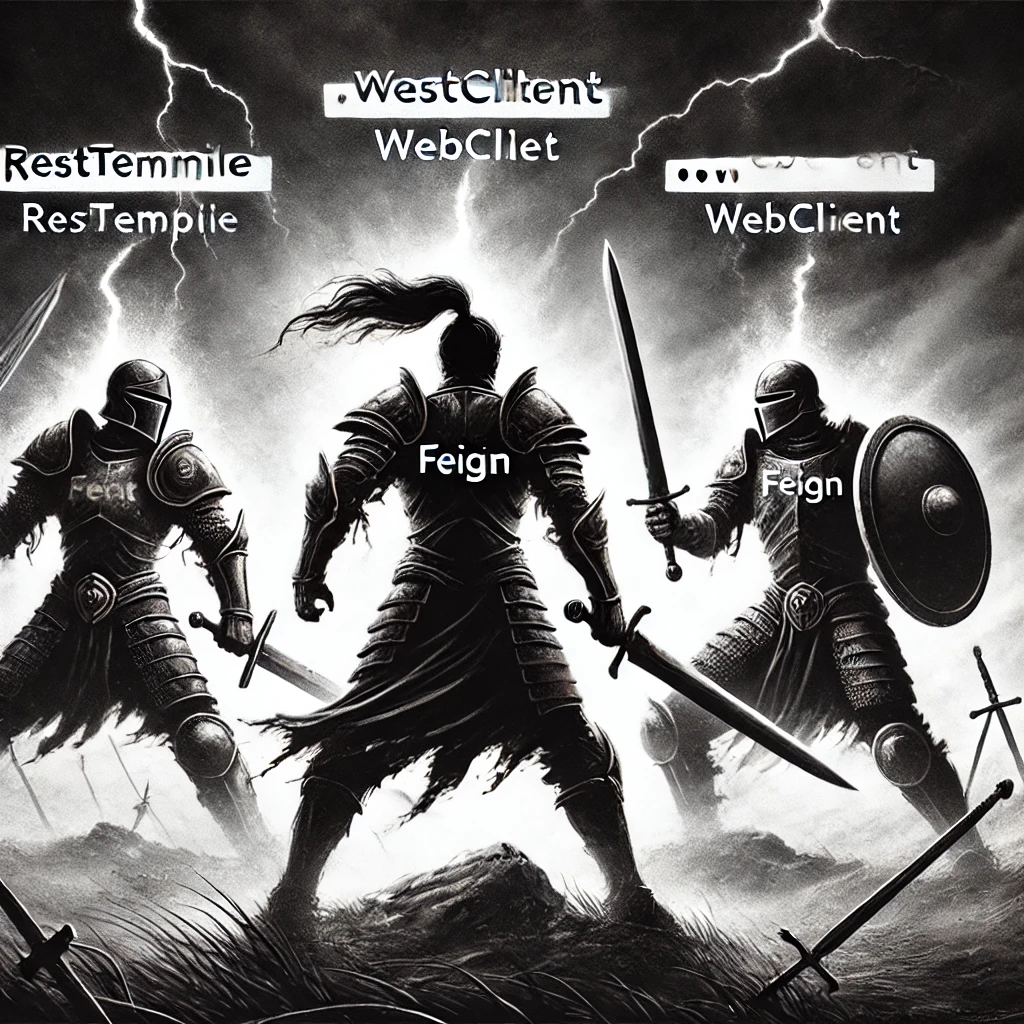Do you want to call an HTTP URL in the Spring Framework? If so, you need an HTTP client.
The Spring Framework provides several HTTP client options, depending on your needs you can pick them.
1. RestTemplate (Deprecated)
- A synchronous HTTP client that has been widely used but is now in maintenance mode.
- Spring recommends using
WebClientinstead.
Spring officially marked
RestTemplateas deprecated in Spring Framework 6, which was released in November 2022. The deprecation was part of the transition toward usingWebClient, which offers better support for modern, reactive programming.Although
RestTemplateis still available, it is now in maintenance mode, meaning no new features will be added, and Spring recommends migrating toWebClient.
2. WebClient (Preferred)
- More modern and flexible than
RestTemplate. - Introduced in Spring WebFlux.
- Supports both synchronous and reactive (asynchronous) programming.
3. Feign Client (It’s not native)
- Declarative HTTP Requests – Define interfaces, and Feign generates the implementation.
- Integration with Spring Boot – Works seamlessly with
@FeignClientand@RequestMapping. - Load Balancing (with Ribbon/Eureka) – Can work with service discovery.
- Interceptor Support – Allows adding custom headers, authentication, etc.
- Retry Mechanism – Configurable for better resilience.
Feign is not part of the Spring Framework itself, but it is widely used in Spring Boot applications for declarative REST clients. It was originally developed by Netflix and later integrated into the Spring Cloud ecosystem as Spring Cloud OpenFeign.
4. RestClient (A Modern Synchronous HTTP Client)
- Synchronous HTTP client –
RestClientis a synchronous HTTP client built upon the foundation of Java’sjava.net.http.HttpClient, introduced in Java 11. - Extensibility – Offers mechanisms for interceptors and error handling to customize request/response processing.
- Spring Integration – Seamlessly integrates with the broader Spring ecosystem.
- Leverages
java.net.http.HttpClient– Benefits from the performance and modern protocol support of the standard Java HTTP client.
Comparison with Spring’s HTTP Clients
| Feature | Feign Client | RestTemplate | WebClient | RestClient |
|---|---|---|---|---|
| Declarative API | ✅ | ❌ | ❌ | ❌ |
| Reactive Support | ❌ | ❌ | ✅ | ❌ |
| Synchronous Support | ✅ | ✅ | ✅ | ✅ |
| Easier to Use for Microservices | ✅ | ❌ | ❌ | ❌ |
| Load Balancing | ✅ (with Spring Cloud) | ❌ | ❌ | ❌ |
Code Samples
1. RestTemplate (Deprecated) – Synchronous Request
RestTemplate restTemplate = new RestTemplate();
String url = "https://jsonplaceholder.typicode.com/todos/1";
ResponseEntity<String> response = restTemplate.getForEntity(url, String.class);
System.out.println(response.getBody());2. WebClient (Preferred) – Asynchronous Request
WebClient webClient = WebClient.create("https://jsonplaceholder.typicode.com");
String response = webClient.get()
.uri("/todos/1")
.retrieve()
.bodyToMono(String.class)
.block(); // Blocking call, use `.subscribe()` for fully async
System.out.println(response);
🔹 Recommended for both synchronous and reactive programming.
3. Feign Client – Declarative HTTP Client
Define the Feign Client Interface
@FeignClient(name = "todoClient", url = "https://jsonplaceholder.typicode.com")
public interface TodoClient {
@GetMapping("/todos/1")
String getTodo();
}
Call the Feign Client in a Service
@Autowired
private TodoClient todoClient;
public void fetchTodo() {
System.out.println(todoClient.getTodo());
}
🔹 Best for Microservices using Spring Cloud OpenFeign.
4. RestClient
import org.springframework.web.client.RestClient;
import org.springframework.http.ResponseEntity;
import org.springframework.http.MediaType;
public class RestClientExample {
public static void main(String[] args) {
RestClient restClient = RestClient.create();
ResponseEntity<String> response = restClient.get()
.uri("https://api.example.com/users/1")
.accept(MediaType.APPLICATION_JSON)
.retrieve()
.toEntity(String.class);
System.out.println("Status Code: " + response.getStatusCode());
System.out.println("Body: " + response.getBody());
}
}Conclusion
Each HTTP client in the Spring ecosystem serves a different purpose:
- RestTemplate is simple but deprecated, making it unsuitable for new projects.
- WebClient is the modern, flexible choice, supporting both synchronous and reactive programming.
- RestClient is Spring’s modern, fluent, and synchronous HTTP client, ideal for straightforward blocking communication and a natural successor to RestTemplate. While powerful, it lacks built-in reactive or declarative features and requires external integration for load balancing in microservices.
- Feign Client is the best option for microservices, offering a declarative approach to REST APIs.
For new projects, WebClient is the recommended choice unless you’re working with Spring Cloud, where Feign might be a better fit.











Leave a Reply